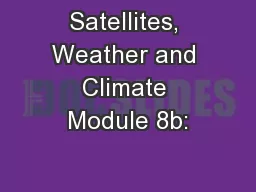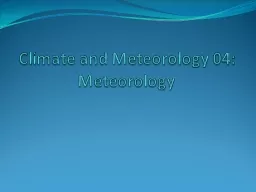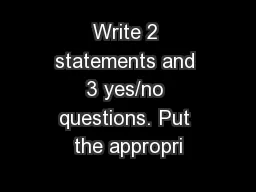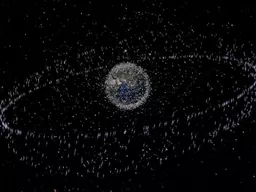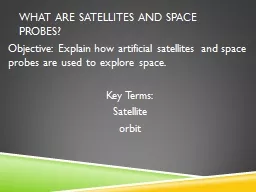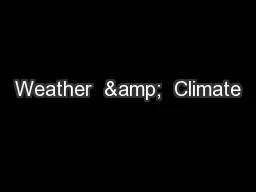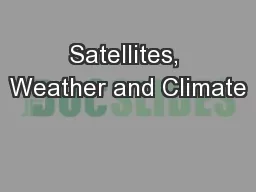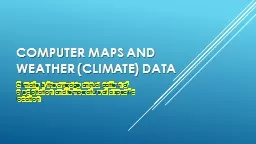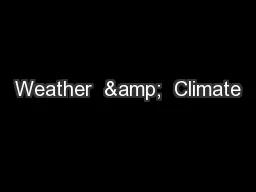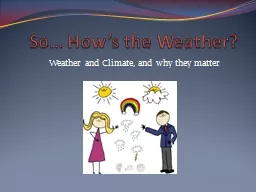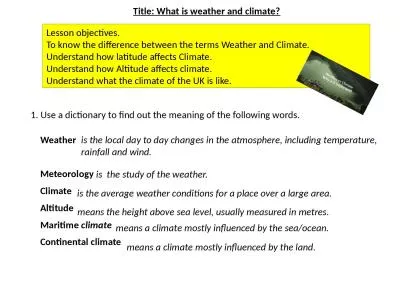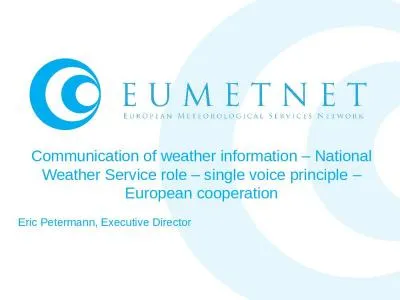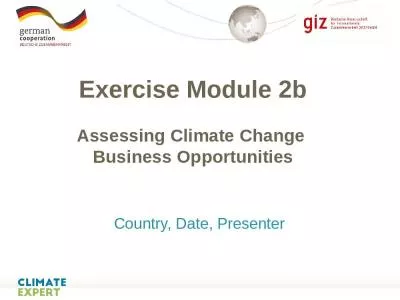PPT-Satellites, Weather and Climate Module 8b:
Author : cheryl-pisano | Published Date : 2017-05-01
Air Quality and Remote Sensing What is Air Quality The term Air Quality can have many different definitions A measure of the condition of air relative to the requirements
Presentation Embed Code
Download Presentation
Download Presentation The PPT/PDF document "Satellites, Weather and Climate Module 8..." is the property of its rightful owner. Permission is granted to download and print the materials on this website for personal, non-commercial use only, and to display it on your personal computer provided you do not modify the materials and that you retain all copyright notices contained in the materials. By downloading content from our website, you accept the terms of this agreement.
Satellites, Weather and Climate Module 8b:: Transcript
Download Rules Of Document
"Satellites, Weather and Climate Module 8b:"The content belongs to its owner. You may download and print it for personal use, without modification, and keep all copyright notices. By downloading, you agree to these terms.
Related Documents

